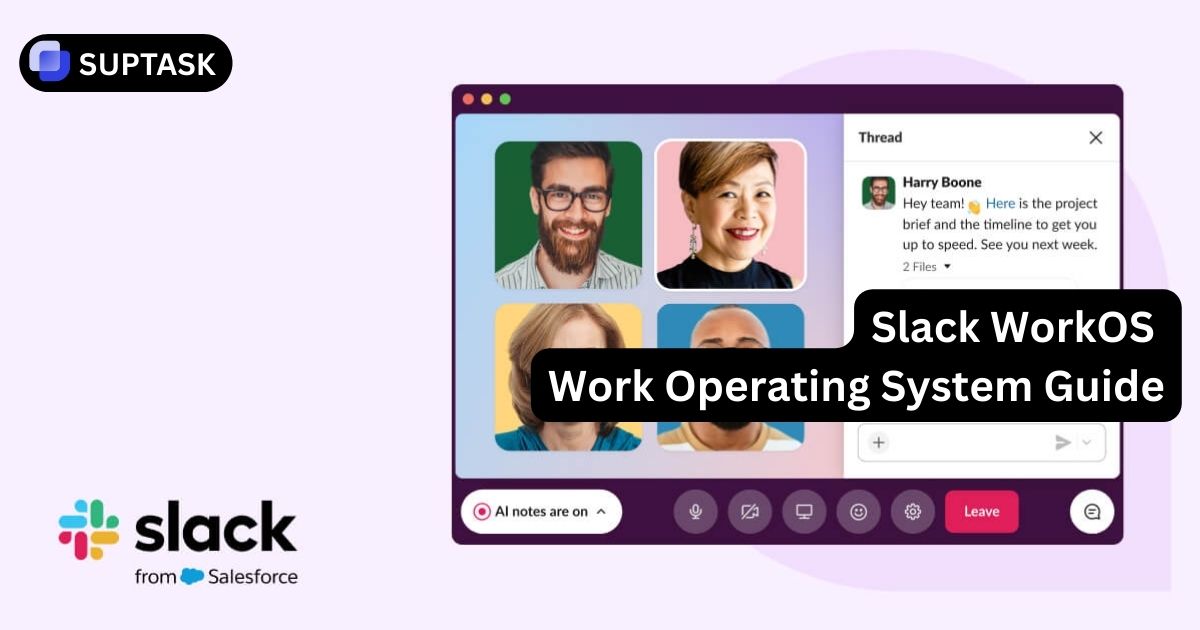Have you ever questioned when a minor IT incident evolves into a more significant problem that demands thorough examination and action?
In today's interconnected world, comprehending the distinction between incidents and problems is vital for effective IT management. In this blog post, we will delve into the nuances between the two, highlight circumstances where incidents escalate into problems, and discuss proactive and reactive approaches to problem management. By the end, you will have a solid grasp of how to handle these situations and enhance your organization's IT performance.
Key Takeaways
- Understanding the differences between incidents and problems is essential for efficient IT management.
- If incidents keep happening repeatedly, if there are multiple incidents that seem connected, or if the business is being significantly affected, it may indicate a deeper underlying issue that needs to be identified and resolved.
- To effectively address and prevent problems, it is essential to undertake root cause analysis, foster collaboration and communication, and continuously strive for improvement. These elements are crucial in maintaining service quality and ensuring customer satisfaction.
Understanding Incidents and Problems
.webp)
In the IT world, incidents and problems are often mistakenly used interchangeably. However, they actually represent two distinct concepts that have different implications for IT service management.
An incident refers to an interruption or unexpected decrease in the quality of an IT service, whether planned or unplanned. On the other hand, a problem is identified as the cause or potential cause of one or more incidents. It is important to differentiate between these two terms in order to promote efficient IT management and ensure customer satisfaction.
Incident management can be likened to Batman, quickly restoring service after an issue arises. On the other hand, problem management is more like Columbo, playing the role of a detective to uncover what caused the incident and find ways to prevent it from happening again. The main goal of incident management is to swiftly restore service, while problem management focuses on investigating and resolving the underlying causes of incidents in order to prevent future occurrences.
Incident Management
Effective incident management focuses on quickly addressing and restoring disrupted services when incidents occur. The goal is to keep the incident management cycle as short as possible.
The first step in the response workflow is prompt communication with responders, such as an incident manager. The best way to approach this is to use an incident management system.
Responders need thorough data from the affected systems to fully grasp the situation and take necessary action.
When monitoring tools detect deviations from expected service metrics, incident response plans are often triggered. The purpose of an incident response post-mortem is to document the events leading up to, during, and after an incident, as well as its resolution. Essentially, incident management aims to address individual incidents and restore normal service quickly. An effective Internal Ticketing System can streamline the reporting and resolution of incidents, ensuring that teams have the tools they need to manage issues efficiently
Problem Management
Although problem management is a distinct process, it heavily relies on an effective incident management process. The main objective of problem management is to identify and address the underlying causes of incidents in order to prevent their recurrence. This critical process plays a vital role in finding long-lasting solutions to problems, ultimately reducing the number of future incidents that an organization may encounter.
The Problem Management Lifecycle typically progresses through stages such as:
- Problem identification
- Investigation
- Diagnosis
- Resolution
- Closure
To ensure a comprehensive approach, problem management involves separating root cause analysis from real-time response. This allows SREs to not only address immediate fixes but also identify and implement long-term solutions.
Identifying the Turning Point: When an Incident Becomes a Problem
.webp)
Determining whether an incident has become a problem in IT management involves considering several factors, including:
- The frequency of the incident
- The level of attention required by the incident management team
- The lack of visibility on ticket statuses and timelines for end users
- The absence of a record of past incidents
- The impact of the incident on the organization’s operations or services
Later in this document, we will explore how repeated incidents, interconnected incidents, and substantial business impact could indicate an underlying issue.
Recurring Incidents
When incidents occur repeatedly, it indicates a deeper underlying problem that demands attention. The repetition emphasizes that the initial resolution did not address the root cause adequately. By recognizing patterns of recurring incidents, organizations can dig deeper and analyze the underlying causes to prevent their recurrence in the future.
Taking a proactive and forward-thinking approach helps to tackle underlying issues and improve overall operational efficiency.
Multiple Related Incidents
When multiple incidents in IT service management are interconnected or have a common origin, they can be classified as related incidents. This indicates the possibility of a shared source or systemic issue that requires attention. By identifying and addressing the root problem, organizations can prevent similar incidents from occurring in the future, leading to improved stability and reliability of their IT services.
Significant Business Impact
When a business experiences an incident, the impact it has on the organization, customers, stakeholders, and reputation is considered to be of great importance in incident management. To assess this impact, criteria such as the number of affected users, severity of the outcome, and significance of those impacted individuals are taken into account.
When significant incidents occur that disrupt business operations, causing unexpected interruptions, it is essential to investigate the underlying issues in order to prevent future occurrences and maintain the organization's service reliability and consistency.
Proactive vs. Reactive Problem Management

Anticipating and resolving potential issues before they arise is the essence of proactive problem management. This approach differs from reactive problem management, which involves addressing incidents that have already occurred and investigating their underlying causes. It is widely recognized that proactive problem management is more effective, as it enables the identification and resolution of root causes before they escalate into significant incidents.
In the following sections, we will delve deeper into these two strategies and explore their implications for effective problem management.
Reactive Problem Management
Addressing issues after they have already occurred, also known as reactive problem management, often leads to repeated incidents. This method focuses on resolving the underlying cause and preventing future occurrences of the problem. However, it can result in inefficiency, increased stress levels, and underperformance.
In contrast, proactive problem management aims to:
- Identify and resolve issues before they escalate into incidents
- Prevent the onset of issues
- Be more efficient and allow for better preparation and prevention of future issues.
Proactive Problem Management
Proactive problem management is an approach that aims to identify and resolve potential issues before they cause incidents. There are several advantages to implementing proactive problem management in IT service management, including:
- Decreased number of critical incidents
- Improved system stability
- Enhanced user productivity
- Optimization of the service lifecycle
- Prevention of major disruptions
To ensure a consistent and reliable IT service, organizations benefit from proactively identifying and addressing potential issues before they lead to incidents. This proactive approach is vital in maintaining a smooth-running service desk. Organizations looking to implement effective problem management strategies can explore options for a Free Ticketing System to get started without significant investment.
Implementing Effective Problem Management
To effectively manage problems, organizations must focus on three key aspects: performing root cause analysis, fostering collaboration and communication, and embracing continuous improvement. These fundamental elements enable the identification and resolution of underlying issues, preventing future incidents while upholding a high standard of service quality.
Later sections of this document will provide a thorough examination of these components, along with valuable insights on how to effectively implement them.
Root Cause Analysis
Root cause analysis (RCA) is a methodical approach that helps organizations identify the underlying causes of incidents or potential problems. By understanding why an incident occurred, RCA allows organizations to prevent similar occurrences in the future. There are several methods available to conduct a root cause analysis, including:
- The 5 Whys Analysis
- Failure Mode and Effects Analysis (FMEA)
- Pareto Chart
- Fishbone Diagram
- Scatter Plot Diagram
Identifying the root cause of an issue enables organizations to:
- Implement suitable solutions
- Enhance the stability and reliability of their IT services
- Significantly reduce the number of incidents they need to manage
- Improve service quality, customer satisfaction, and overall operational efficiency
Collaboration and Communication
To effectively manage problems, it is crucial to have collaboration and communication among teams. This includes the participation of a dedicated problem management team. Collaboration provides individuals with exposure to different viewpoints and ideas, which allows for the pooling of knowledge and expertise.
It also facilitates communication and coordination among team members, fostering a shared sense of responsibility and accountability while creating a culture of continuous learning and improvement. Technology can greatly support this collaboration and communication process, with tools like Microsoft Teams, Zoom, Slack and Slack ticketing enhancing productivity, enabling informed decision-making, and streamlining workflow processes.
Collaboration tools play a crucial role in facilitating effective communication, information sharing, and feedback, which are vital for problem-solving and decision-making processes. In addition, an Email Ticketing System can help track communications and ensure all team members are informed. Additionally, technology enhances productivity, enables informed decision-making, and streamlines workflow processes, resulting in improved problem management outcomes. By fostering an environment that promotes collaboration and communication, organizations can effectively address issues and ultimately deliver high service quality and customer satisfaction.
Continuous Improvement
Continuous improvement involves consistently enhancing processes, products, and services. This approach includes identifying areas for improvement, making changes, and then assessing the results to ensure the effectiveness of those changes. One effective approach is adopting a continual service improvement strategy to constantly optimize services for improved performance and customer satisfaction.
Continuous improvement plays a crucial role in problem management processes. It allows organizations to adjust and grow with changing circumstances, ultimately resulting in better decision-making and more effective problem resolution.
Real-World Examples: Incidents Transforming into Problems
.webp)
Studying real-life incidents that have evolved into problems can offer IT teams valuable insights, enabling them to comprehend the intricacies and hurdles of incident and problem management. By analyzing these instances, organizations can gain knowledge from others' experiences and implement best practices to enhance their own problem management processes.
In the following sections, we will explore two specific examples that demonstrate how significant incidents can evolve into challenging issues.
Example 1
When a network experiences frequent outages, it may be a sign of an underlying problem with the network infrastructure. Issues such as loose or damaged cables, slow or unstable connections, and network timeouts can all contribute to these outages, indicating possible infrastructure problems.
By identifying and addressing the root cause of the issue, organizations can develop a lasting solution that prevents future network outages and ensures a reliable and consistent IT service.
Example 2
Repeated instances of slow application performance can indicate underlying issues with either the application's architecture or its resource allocation. Several factors may contribute to this, including:
- an overloaded server
- poorly written database queries
- resource congestion
- misconfigured settings
- inadequate environment resources
can all contribute to slow application performance and indicate potential underlying architecture issues.
Identifying and resolving these issues allows organizations to enhance application performance, ensuring a superior experience for their users.













